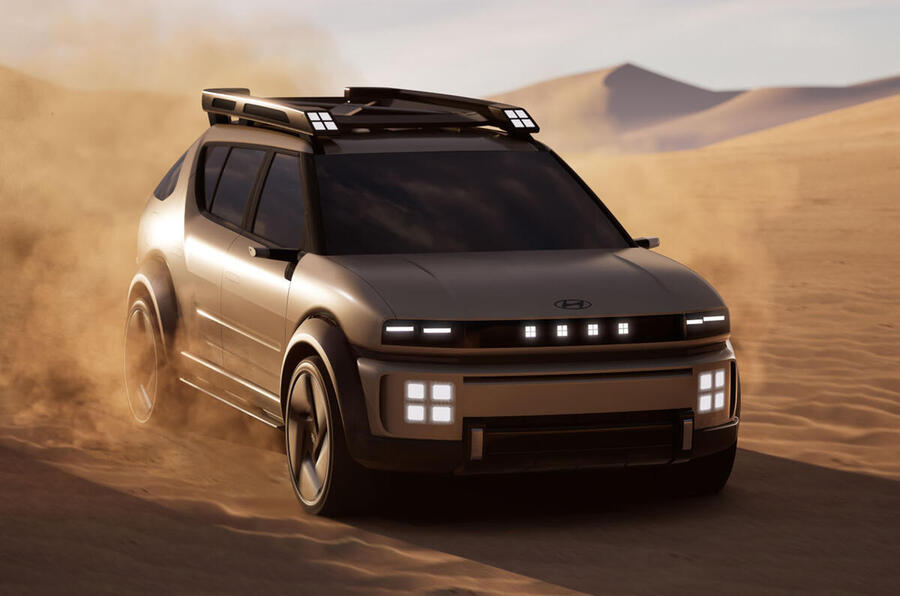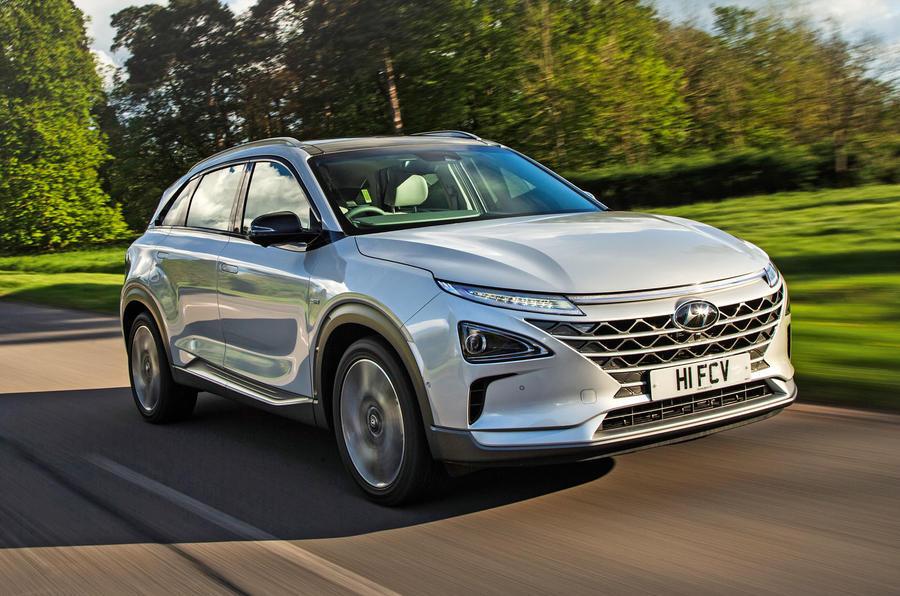This post was originally published on Autocar
Are hydrogen cars viable? We run through all you need to know about this alternative fuel
Go back a decade and hydrogen cars were deemed by many to be the next big thing. However, little progress has been made in bringing them to the mainstream market.
But there is still hope for the hydrogen car. Toyota, BMW and Hyundai are still investing heavily, meaning we could still see a resurgence in the future.
But what actually is a hydrogen car and how do they stack up to petrol, diesel and electric cars?
We have all you need to know right here, including the pros and cons of hydrogen cars, plus what the future looks like for the technology.
What is a hydrogen fuel cell vehicle?
Hydrogen cars, or hydrogen fuel cell electric vehicles (often shortened to FCEV), are vehicles powered by liquid hydrogen.
This is stored in a tank at a pressure of 700 bar and then used to generate high-voltage electricity for a small buffer battery, which in turn provides transient power for acceleration.
While many people tout hydrogen as the fuel of the future, the truth is that hydrogen cars have been around for decades. In 1998, Mercedes-Benz produced the first road-legal FCEV with the A-Class-based Necar.
How do hydrogen fuel cell vehicles work?
Hydrogen cars draw their power from a fuel cell stack, where oxygen and hydrogen react to generate electricity, sending energy to an electric motor. This means they drive just like an electric car.
Likewise they produce zero harmful emissions at the tailpipe, making them a much cleaner proposition petrol or diesel cars, at least from the driver’s point of view.
How do you fill up a hydrogen car?
Hydrogen cars can be refuelled from hydrogen pumps at select filling stations. These look much like regular petrol and diesel pumps.
Refuelling a hydrogen car is a simple task: just open up the fuel filler cap and insert the pump. Typically, refuelling takes about five minutes.
The hardest part of refuelling a hydrogen car in the UK is finding a filling station. According to UK H2 Mobility, there are now just three available for public motorists in the UK.
They’re based at Hatton Cross in London, Tullos in Aberdeen and the Advanced Manufacturing Park near Sheffield.
Many have been shut down in recent years and plans for new ones haven’t come to fruition.
What’s the latest on hydrogen cars?
Progress in the world of hydrogen cars has slowed over the past few years. For an in-depth view of the current state of the hydrogen car industry, read more here.
Some countries are closing hydrogen fuel stations in rapid numbers: H2 Mobility has shut 22 fuel stations in Germany and Shell has reportedly shut 10 of its 11 hydrogen fuel stations in the US, despite originally having planned to open a further 48.
That hasn’t stopped some car brands from investing hefty sums into the technology, though.
BMW will launch the first of a future hydrogen car line-up in 2028, with the first model based on the BMW X5. The car uses a powertrain co-developed with Toyota.
Hyundai recently revealed the Initium concept, which previews the next-generation Nexo hydrogen car with a modern design.

It takes a single electric motor with 201bhp – 40bhp more than the existing Nexo – and Hyundai is aiming for a range of 404 miles between top-ups.
The Initium previews a production model that’s due to be unveiled by next summer, but it’s unclear if it will ever come to the UK, considering that just 50 Nexos have been sold since the model was launched five years ago.
Toyota is also continuing its investment into a new-generation Mirai saloon, despite not having sold a single new example in the UK in 2024.
Hydrogen cars available in the UK
Two hydrogen cars were until relatively recently available as new cars in the UK today and some car makers have hydrogen in their plans for production in the future.
Toyota Mirai

The Toyota Mirai first appeared in 2015 and achieved 10,000 global sales before entering its second generation in 2021.
The latest Mirai is equipped with a fuel stack capable of storing 5.6kg of hydrogen and has a WLTP range of up to 400 miles.
Despite being heavier and larger than the first-generation car, it takes just 8.7sec to travel from 0-62mph and 25.5sec to hit 100mph. That’s thanks to a powertrain that produces 180bhp and 221lb ft of torque.
However, the Mirai wasn’t cheap when it was launched in 2021. It commanded a price of £64,995 and you can’t currently order one from Toyota.
Read our Toyota Mirai review
Hyundai Nexo

Hyundai has been developing fuel cell technology since the 1990s, and the Nexo is the firm’s first production hydrogen car.
Priced similarly to the Mirai at £65,995, the Nexo’s powertrain produces 161bhp and 291lb ft. Meanwhile, 0-62mph is completed in 9.6sec.
The Nexo can store up to 6.33kg of hydrogen, which supplies power to a 1.56kWh battery. It offers a range of around 380 miles, and we were impressed by its solid driving dynamics and rolling refinement.
There are fewer than 30 Nexos on UK roads today and, like the Mirai, it’s no longer available to order.
Read our Hyundai Nexo review
BMW iX5 Hydrogen
![]()
BMW formed a partnership with Toyota based around hydrogen technology and it plans to bring the iX5 Hydrogen to market in some form by 2030.
With a 396bhp powertrain and 524lb ft of torque, it packs significantly more punch than the Toyota or Hyundai, backed up by its sub-6.0sec sprint from 0-62mph.
Range stands at around 313 miles and our drive of the car revealed it to be comfortable, capable and almost ready for the road. It certainly paves the way for BMW’s entry into the world of hydrogen.
Read our BMW iX5 Hydrogen review
Pros of hydrogen cars
One of the biggest benefits of driving a hydrogen car is that it produces zero harmful emissions from the tailpipe, just small amounts of water.
That means it’s a lot more environmentally friendly to drive than a petrol or diesel car and would be welcome in the ever-increasing number of clean air zones popping up around the UK.
Hydrogen cars are also significantly faster to fill up than electric cars.
Hydrogen is the most abundant element on the planet, too.
Some consider hydrogen cars to be more efficient than other powertrains, as hydrogen power uses between 40-60% of its fuel’s energy with a 50% reduction in fuel consumption. It’s not uncommon to see around 400 miles of travel on a single tank when using hydrogen.
And unlike with an EV, the range of a hydrogen car isn’t impacted by outside temperatures.
Cons of hydrogen cars
While hydrogen cars can be more efficient and environmentally friendly for the driver, there are some drawbacks.
Emissions from the tailpipe may be zero, but there are significant environmental challenges with producing hydrogen on an industrial scale.
Producing hydrogen at this level uses a significant amount of fossil fuel. According to tyre giant Pirelli, as much as 10kg of CO2 is produced for every kilogram of hydrogen.
There are methods of producing hydrogen that use renewable energies, but these are currently far more expensive. For example, Denmark produces hydrogen from wind while Iceland uses geothermal energy to produce it.
Hydrogen cars are also quite expensive to buy due to their complexity, and the small number of refuelling stations is a significant black mark against this technology.
The future of hydrogen vehicles
Currently, hydrogen cars aren’t quite viable for the broader public. There are simply too few filling stations and the hydrogen itself isn’t yet commercially or environmentally viable to produce en masse.
But with investment from the UK government aiming to accelerate the implementation of hydrogen vehicles, we could see more car makers turn their efforts to this technology in the coming years.
One such company hoping to drive the production of hydrogen vehicles is engineering firm WAE, which revealed a platform for them in 2023.
It says the platform features a “cutting-edge” H2 fuel cell system and a liquid-cooled battery pack with up to 576bhp available.
Elsewhere, Alpine has hinted that its radical hydrogen supercar concept, the Alpenglow, could make production. This injects hydrogen into the cylinders of a V6 combustion engine to reduce emissions.
For the general public, though, it looks like the future of cars in the UK will remain electric unless and until hydrogen refuelling infrastructure and production methods become more viable.
